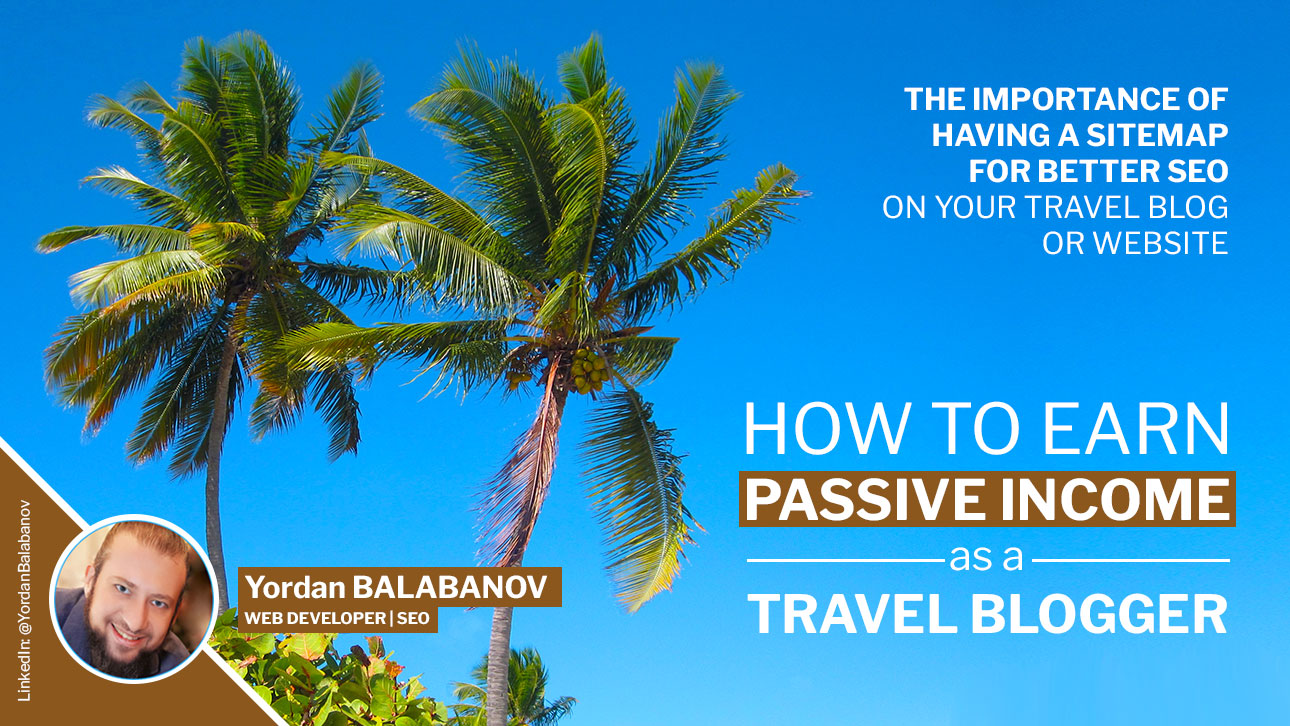Among the various SEO strategies, having a sitemap is often overlooked but can significantly enhance your website's performance
In today's digital age, where travel enthusiasts turn to the internet to plan their next adventure, having a strong online presence is crucial for travel blogs and websites. Search Engine Optimization (SEO) plays a vital role in increasing your website's visibility and attracting organic traffic. In this article, we explore why every travel blog or website should have a sitemap for better SEO.
01. What is a Sitemap?
A sitemap is a file that lists all the pages of your website and provides search engines with valuable information about its structure and content. It acts as a roadmap for search engine crawlers, helping them navigate and index your site effectively. Sitemaps can be created in XML format, which is specifically designed for search engines, or in HTML format, which is more user-friendly.02. Improved Website Crawling and Indexing
Search engine crawlers systematically explore websites to gather information for search engine result pages (SERPs). Without a sitemap, these crawlers rely on internal links to discover and index your site's pages. However, if your website has complex navigation or deep pages buried within the site structure, crawlers might struggle to find and index them accurately.By providing a sitemap, you give search engines a clear and comprehensive view of your website's structure. This enables them to index your pages more efficiently, ensuring that your travel blog or website is accurately represented in search results.
03. Enhanced Website Visibility
In the highly competitive travel industry, ranking well in search engine results is essential to stand out from the crowd. A sitemap improves your website's visibility by enabling search engines to crawl and index your content more effectively. This means that your travel blog posts, destination guides, and other valuable content are more likely to appear in relevant search queries, attracting organic traffic to your site.Additionally, having a sitemap allows search engines to identify and understand your most important pages. By prioritizing these pages in search results, you increase the chances of attracting users interested in your content, resulting in higher click-through rates and improved user engagement.
04. Faster Indexing of New Content
As a travel blogger or website owner, you regularly create fresh and engaging content to keep your audience updated and interested. However, if search engines are not promptly aware of your new posts or pages, your content may not receive the exposure it deserves.By submitting your sitemap to search engines, you ensure that they are promptly notified whenever new content is published on your travel blog or website. This speeds up the indexing process, allowing your latest posts to appear in search results faster. As a result, your travel blog or website stays relevant and up-to-date in the eyes of search engines and your target audience.
05. Improved User Experience
A sitemap not only benefits search engines but also enhances the user experience on your travel blog or website. By organizing your site's pages and providing a clear hierarchical structure in your sitemap, visitors can easily navigate and find the information they are looking for.Moreover, if your website contains multimedia elements like images, videos, or interactive maps, including them in your sitemap can ensure that search engines index and display these media assets appropriately. This can lead to increased visibility in image or video search results, attracting more visitors to your travel blog or website.
Conclusion:
In the competitive landscape of the travel industry, having a strong online presence is vital for the success of your blog or website. While there are various SEO strategies you can implement, creating and submitting a sitemap should not be overlooked. A sitemap helps search engines crawl and index your website effectively, leading to improved visibility, faster indexing of new content, and an enhanced user experience. By including a sitemap on your travel blog or website, you ensure that search engines understand the structure and content of your site, increasing the likelihood of your pages appearing in relevant search results. This, in turn, drives organic traffic to your website, expanding your reach and attracting potential travelers to explore your content.
Furthermore, a sitemap enables search engines to identify your most important pages and prioritize them in search results. This means that your well-crafted destination guides, travel tips, and captivating storytelling have a higher chance of being seen by users searching for travel-related information. As a result, you can establish yourself as a credible and authoritative source in the travel niche, building trust and loyalty with your audience.
Additionally, submitting your sitemap to search engines ensures that new content is promptly discovered and indexed. Travel blogs and websites thrive on fresh and timely information, and by accelerating the indexing process, you can showcase your latest articles, recommendations, or promotions to a wider audience sooner. This can lead to increased engagement, social sharing, and ultimately, more traffic and potential conversions.
A sitemap also improves the overall user experience on your travel blog or website. With a clear and organized structure, visitors can easily navigate through your content, finding the information they seek effortlessly. Whether it's discovering your top travel destinations, finding specific travel itineraries, or exploring your travel photography gallery, a well-structured sitemap facilitates a user-friendly experience, reducing bounce rates and encouraging longer stays on your site.
Furthermore, if your travel blog or website includes multimedia elements such as images, videos, or interactive maps, including them in your sitemap ensures that search engines recognize and index these assets appropriately. This increases the chances of your visual content appearing in image or video search results, attracting more visitors and potential travelers who are visually driven.
In conclusion, incorporating a sitemap into your travel blog or website is a critical aspect of optimizing your SEO efforts. It improves the crawling and indexing process for search engines, enhances your website's visibility, facilitates faster indexing of new content, and provides a better user experience. By investing time and effort into creating and submitting a sitemap, you lay a solid foundation for a successful travel blog or website, increasing your chances of reaching and inspiring a broader audience of travel enthusiasts. So, don't overlook the power of a sitemap – let it guide both search engines and users to explore the wonders of your travel content.
Let yourself be inspired for new adventures! Follow Yordan on the social media!     |
![Български [BG] Български [BG]](/media/mod_languages/images/bg_bg.gif)
![English [EN] English [EN]](/media/mod_languages/images/en_gb.gif)






























